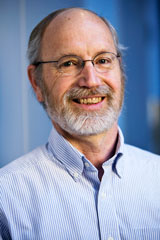- Undergraduate
- Graduate
- Undergraduate
- Graduate
- Directory
- Research Groups
- Prospective Students
- Academics
- Faculty







Area of expertise: Photonic systems and diffractive optics. Microoptics
Education
Ph.D., EE, 1980, University of California, San Diego, CA, United States
B.S., Applied Physics, 1974, California Institute of Technology, Pasadena, CA, United States
Contact information
Office: 5-125 Keller Hall
Telephone: (612) 625-0838
E-mail: leger (at) umn.edu
Research Web site: http://www.ece.umn.edu/groups/optics
Honors/Awards
2009 George Taylor Distinguished Professor Award (University of Minnesota)
2008 George Taylor Distinguished Service Award (University of Minnesota)
2007 George Taylor Distinguished Teaching Award (University of Minnesota)
2006 HKN Outstanding Teaching Professor Award (University of Minnesota)
2006 Institute of Technology Student Board Professor of the Year
2006 Elected to the University of Minnesota Academy of Distinguished Teachers
2006 Horace T. Morse-University of Minnesota Alumni Association Award for Outstanding Contributions to Undergraduate Education
2005 Mr. and Mrs. George W. Taylor Distinguished Teaching Professorship (2005- present)
2002 Elected Fellow of the International Society for Optical Engineering (SPIE)
2002 Elected Fellow of the Institute of Electrical and Electronics Engineers (IEEE)
2001 Cymer Professorship of Advanced Optical Systems, Metrology, and Lasers
2000 George Taylor Distinguished Research Award (University of Minnesota)
1998 Joseph Fraunhofer Award/Robert M. Burley Prize (Optical Society of America)
1997-1998 HKN Outstanding Teaching Professor Award (University of Minnesota)
1995 Elected Fellow of the Optical Society of America (OSA)
Synopsis
My research group explores the application of new techniques in diffractive optics and micro/nano optics to the design of modern electro-optic and biomedical devices. This integration has led to many unique applications ranging from novel laser systems to specialized measurement and sensing instrumentation to extreme imaging architectures. Much of our work is highly interdisciplinary, drawing on various aspects of modern optics, signal processing, and device physics.
A primary interest in my group is microoptical system design, where the incorporation of MEMS components, micro/nano optics, and computational imaging techniques allows us to introduce unique functionality to optical systems. This includes hyperspectral imaging, adaptive imaging, and imaging with extreme form factors.
Exotic laser resonators have been of particular interest, where we are studying architectures for performing both coherent and incoherent methods of laser beam addition. We also study a variety of techniques for controlling and shaping laser modes, both by designing custom laser resonators and by applying optics external to the laser cavity.
A third research topic encompasses optical measurement and sensing technologies. We are studying applications of polarization and vector diffraction to measurement systems, and optimal design of biomedical instrumentation based on surface plasmon resonance detection.
Selected publications
M. Khajavikhan and J. R. Leger, "Efficient Conversion of Light from Sparse Laser Arrays into Single-Lobed Far-Field Using Phase Structures," Opt. Lett. 33, 2377-2379 (2008).
B. Hao and J. Leger, “Smallest Flat-Top Focus by Polarization Engineering,” Appl. Opt. (2008).
Brad Tiffany and James Leger, "Losses of Bound and Unbound Custom Resonator Modes", Opt. Exp. 15, 13463-13475 (2007).
E. Shields, W. Zhou, Y. Wang and J. Leger, "Microelectromechanical system-based adaptive space-variant imaging microspectrometer," Appl. Opt. 47, 7631-7639 (2007).
B. Hao and J. Leger, “Experimental Measurement of Longitudinal Component in the Vicinity of Focused Radially Polarized Beam,” Opt. Exp. 15, 3550-3556 (2007).